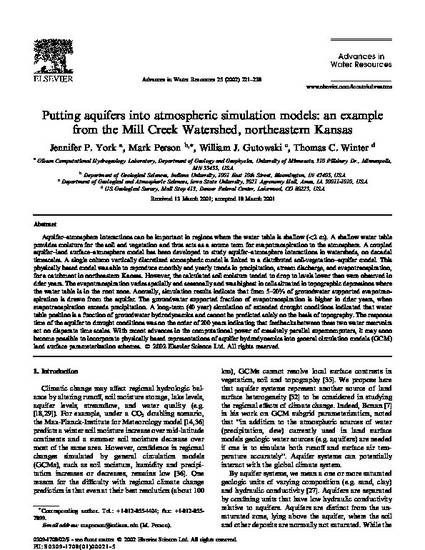
Aquifer–atmosphere interactions can be important in regions where the water table is shallow (<2 m). A shallow water table provides moisture for the soil and vegetation and thus acts as a source term for evapotranspiration to the atmosphere. A coupled aquifer–land surface–atmosphere model has been developed to study aquifer–atmosphere interactions in watersheds, on decadal timescales. A single column vertically discretized atmospheric model is linked to a distributed soil-vegetation–aquifer model. This physically based model was able to reproduce monthly and yearly trends in precipitation, stream discharge, and evapotranspiration, for a catchment in northeastern Kansas. However, the calculated soil moisture tended to drop to levels lower than were observed in drier years. The evapotranspiration varies spatially and seasonally and was highest in cells situated in topographic depressions where the water table is in the root zone. Annually, simulation results indicate that from 5–20% of groundwater supported evapotranspiration is drawn from the aquifer. The groundwater supported fraction of evapotranspiration is higher in drier years, when evapotranspiration exceeds precipitation. A long-term (40 year) simulation of extended drought conditions indicated that water table position is a function of groundwater hydrodynamics and cannot be predicted solely on the basis of topography. The response time of the aquifer to drought conditions was on the order of 200 years indicating that feedbacks between these two water reservoirs act on disparate time scales. With recent advances in the computational power of massively parallel supercomputers, it may soon become possible to incorporate physically based representations of aquifer hydrodynamics into general circulation models (GCM) land surface parameterization schemes.
Available at: http://works.bepress.com/william-gutowski/58/

This article is from Advances in Water Resources 25 (2002): 221–238, doi:10.1016/S0309-1708(01)00021-5.